Flying High, And Upside Down, With The Breitling Jet Team
The man they call Douky is humming along happily right after he’s checked on me for the second time since we took off. “You ok, Abby?” he says into his microphone a smile in his voice. I’m sitting second seat of an L-39C Albatros, a Czech training jet designed in the late ‘60s, and trying not to accidentally touch anything in the cockpit while simultaneously remembering to breathe and tighten my stomach muscles to keep from passing out.
This small maneuverable jet can do upwards of 450 miles an hour and put pilots (and their planes) under 7 to 8Gs of longitudinal force. Today, Douky informs me, we’ll only pull four-and-a-half Gs, and our flight will last a little over half an hour. These are facts that I’d known before I arrived thanks to a little bit of digging, and they’d kept me up worrying the night before, hoping that I wouldn’t pass out or puke my guts out trying to fly with the Breitling Jet Team.
“Hmm, it’s a bit windy up here today.” Douky announces into my helmet. The eight jets—the world’s largest team of civilian aerobatic flyers—space slightly further apart as we head out over Galveston Bay. I’m close enough to wave to the other passengers across the formation and see them smile and give thumbs up as we fly alongside. In the freshening breeze at 5,000 feet above the earth the small jets jounce and twitch. Periodically, I hear the pilots talk to one another in quick snippets of French but 90 percent of the time they are flying along looking at each other out the sides of the their cockpits.
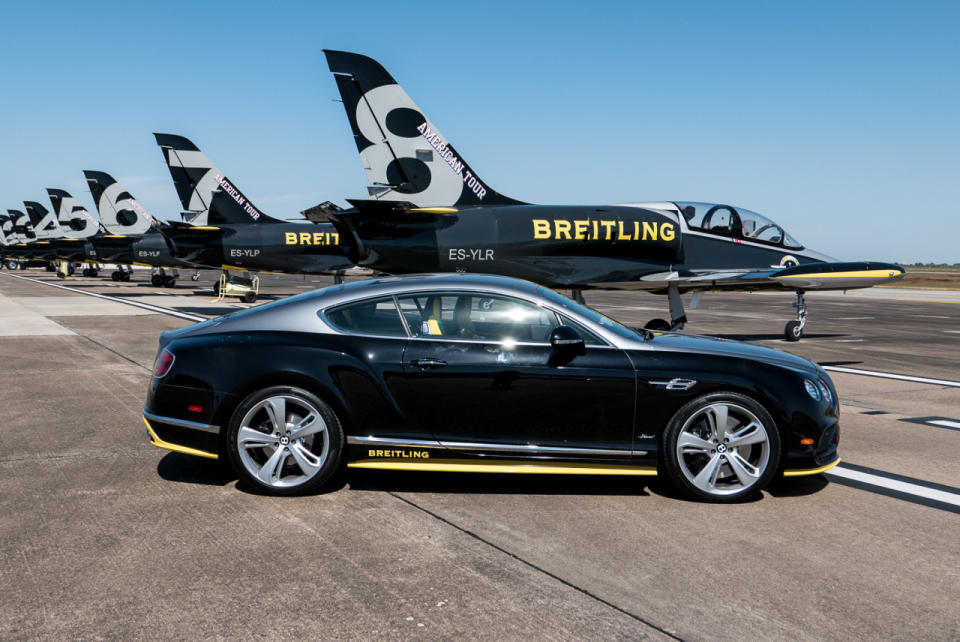
I’m lucky enough to be riding shotgun with Christophe Deketaelare, nicknamed “Douky” for short, who flies the number 3 jet. Our spot takes up what Douky informs me is the best seat in the house for the maneuvers we are going to do—he flies what’s known as First Slot and it essentially puts us smack in the middle of the formation, directly behind the leader—the number one plane– piloted by Jacques “Speedy” Bothelin.
“Here we go, in three, two, one.” Douky counts down, his voice echoing inside my helmet. The next thing I know, despite the stupid grin on my face, my cheeks are pulled downward and the ground is tearing away behind me. Being in a training aircraft means that I am sitting in my own personal cockpit with a full suite of controls all within reach of my feet and hands. The stick periodically tilts between my legs as Douky keeps us within spitting distance of the six other black and yellow jets in the midst of a giant loop over Galveston Bay. I’ve been briefed—don’t touch anything red and keep your hands on your harness. At the top of the loop, around 10,000 feet above the ground, the pressure lifts and I can breathe again. I’ve felt lateral Gs before in race cars on a track, but vertical Gs are an entirely new experience. The acceleration of the jet forces blood from your head towards your feet, which, in some cases can cause black outs. According to Douky there’s really no way to train for it, you just eventually get used to it after awhile.
As the blood rushes back to my head, my hands start to tingle like they’re going to sleep. Douky’s voice snaps me back from worrying whether or not the team of pilots is going to have to carry me out of the cockpit in a heap. “Ok, next is the barrel roll,” he says. I keep my eyes up on and on the horizon to stave off motion sickness, the way I learned while sailing with my dad. My body is pushed hard into the ejection seat I’m strapped into in a five-point harness. Before we left the ground the engineer strapping me in asked me to count the number of pins he pulled out of the seat, arming it in case we have to bail at the last minute.
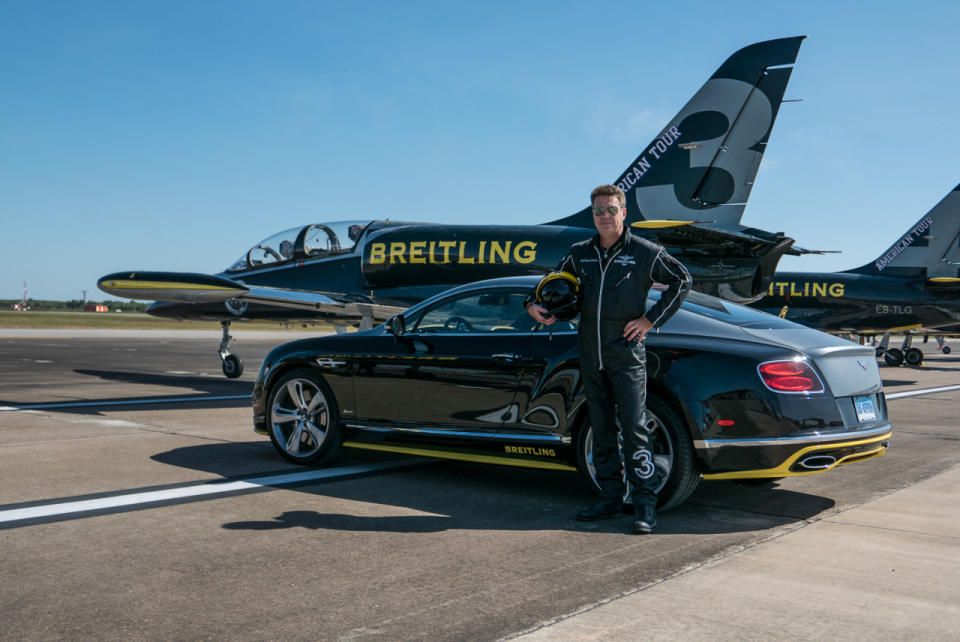
Luckily for me, the team has only had to eject once. In 2012, the number two jet suffered engine problems on a repositioning flight between the Netherlands and Belgium. Both the pilot, Bernard Charbonnel, who is flying the number two jet today, and his engineer successfully ejected and the plane crashed into an empty field. On this flight, there’s very little drama in the air as we level out and head for the horizon again. Douky checks in to make sure I’m still conscious and asks me how I feel.
Despite the fact that the air vents in my cockpit are open full blast, I’m suddenly incredibly hot and my breathing shallows. I tell Douky this and he tells me that after one final maneuver—an airbrake—we’ll be back on the ground. My slightly foggy brain hopes that it’s sooner rather than later and I roll up the sleeves of my flight suit. We cruise along for a few minutes in a straight and thankfully level line, and I hear Douky singing again. By this point I’ve come to the conclusion that he sings when we’re about to go into a maneuver. I’m sure it’s based on psychological trick that gets the passenger thinking about something else as their body is put under strain. Luckily for me his tune works as the planes around me break away in quick succession, smoke trailing out behind them. The next thing I know, it’s our turn and we’re heading straight back up into the blue. It’s the most giggle-inducing, tunnel-vision-y experience I’ve ever had and despite the slight feeling of swimming in the atmosphere, I’m loving every minute of it.
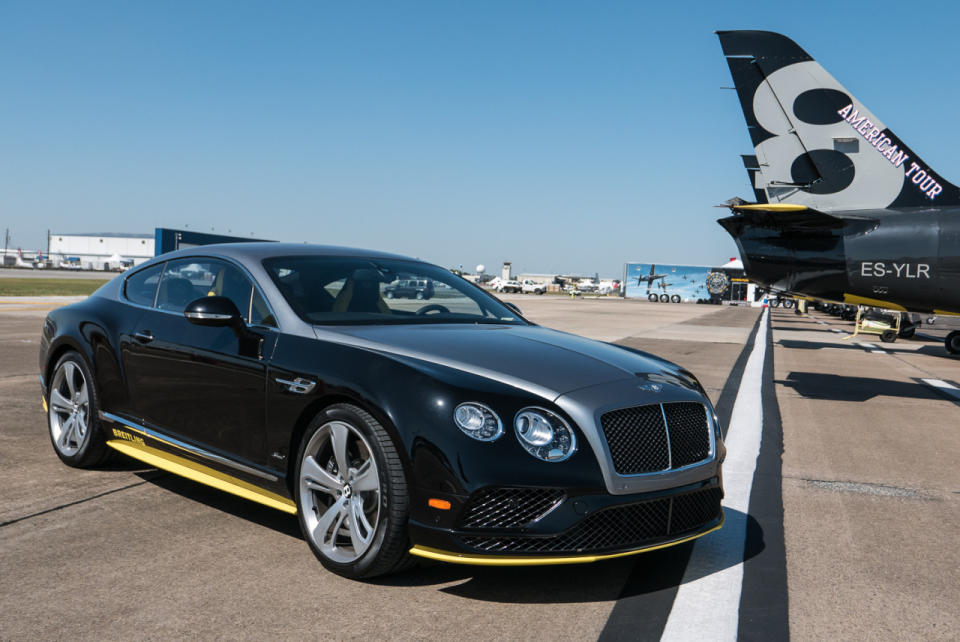
Together this team of seven pilots makes up largest civilian professional jet team in the world. Based in Dijon, France, they came together in 2003 under the direction of Jacques “Speedy” Bothelin, the only one of the group who isn’t former French military. He cut his teeth as a stunt flier after his eyesight kept him from going into the French Air Force. Jacques also acts as the flight leader, the number one emblazoned on the pant leg of his flight suit.
Accuracy in this kind of flying is everything, and that’s one reason why Breitling and Bothelin’s team paired up in 2003. Breitling has been building the chronometers for the cockpits of airplanes since the early 1930s and came to fame when they equipped the British Royal Air Force’s prop planes with their equipment during World War II. Breitling’s movement is developed entirely in-house (where as other watchmakers use movement developed by outside manufacturers) which makes it special. The Breitling Navitimer made its first trip to space on the wrist of astronaut Scott Carpenter during the Aurora 7 mission in 1962 and since then Breitling watches have become something of a collectors item and a mark of wealth for both pilots and ground dwellers, alike. Each of the pilots wear one of the two special Breitling Jet Team American Tour watches on their wrists as a commemorative item. The special edition watches range in cost from $9,800 to just above $10,000 and Breitling only made 750 of them.
While the pairing of luxury watches and automobiles is nothing new, the relationship between Bentley and Breitling has been around for quite some time. Twelve years ago they paired up when Bentley solicited them to build the instruments in the Continental GT and today Breitling provides all the clocks in Bentley’s entire line, including the most recent Tourbillon they created for Bentley’s SUV, the Bentayga that we drove in November last year. When the Breitling Jet Team announced that it would make it’s U.S. debut last summer, Bentley’s bespoke Mulliner division—the one that does all the customization for Bentley–decided to mark the occasion with a run of seven special cars done up in Breitling Jet Team livery.
Once we land the pilots and their guests joke with one another. Douky helps me out of the tiny cockpit and gives me a giant hug laughing as I unzip my flight suit and attempt to cool off. As things in my eyesight stop swinging and I guzzle a bottle of water, I suggest that Douky pull some much more sedate lateral Gs (figuratively anyway—we were on a crowded Houston road after all) in the special number three, Breitling Jet Team Bentley Continental GT Speed. As father of six, he’d never driven a Bentley before, so we took the car out for a spin around Ellington Air Field.
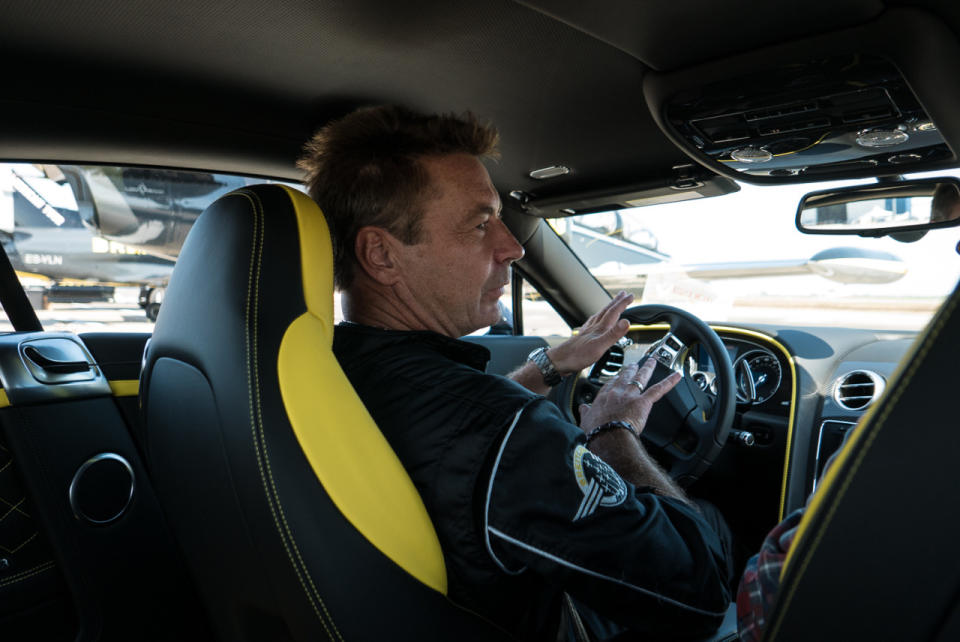
As Douky climbs in he explains that his usual daily driver is BMW and that his wife has an SUV to carry the kids around town. He proclaims himself “not a car guy,” but says with a grin as he hits the accelerator, “This is a fun toy.” And a toy it is.
The Bentley Continental GT Speed has been around since 2013 and there are only seven that get the Breitling Jet Team treatment. All seven of the $298,000 cars have been spoken for (and delivered to their owners). The car still gets 626 horsepower and 605 lbs feet of torque out of its W-12 engine and it’s the most powerful model in the Continental family, with a top speed of 206 miles per hour.
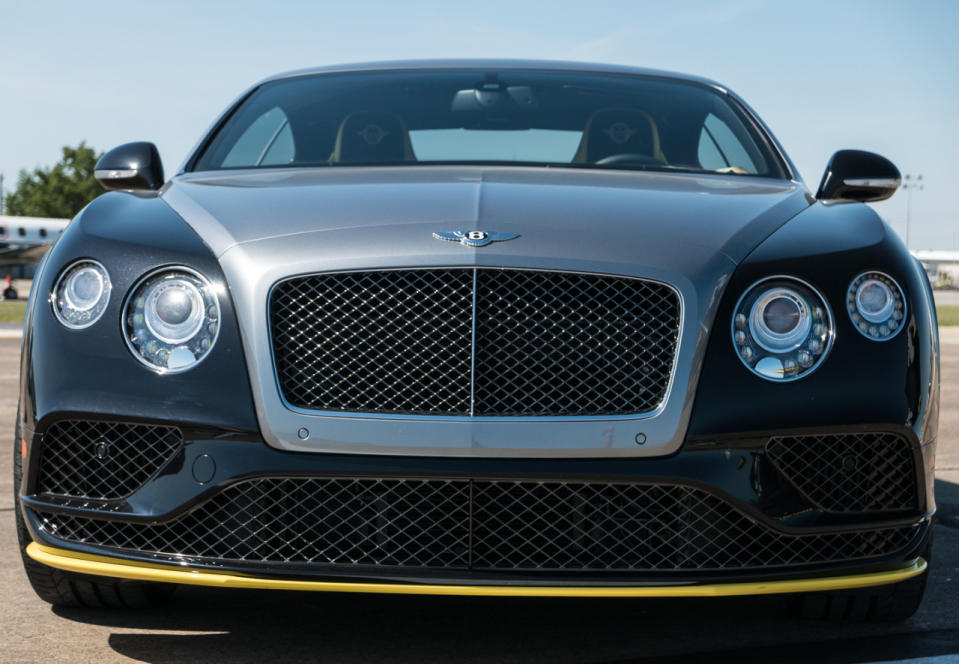
Trimmed in a specific Breitling yellow, each car also has it’s very own unique dash with the matching number jet. The specialty silver and black paint on the exterior is hand applied, hand buffed and reapplied again. Inside bright Breitling yellow leather accents the door panels, a line around the dash, the bolsters and stitching of the seats and the gear shift. An image of the seven Breitling Jets in the Avenger Formation adorns the carbon fiber dash on the passenger side.
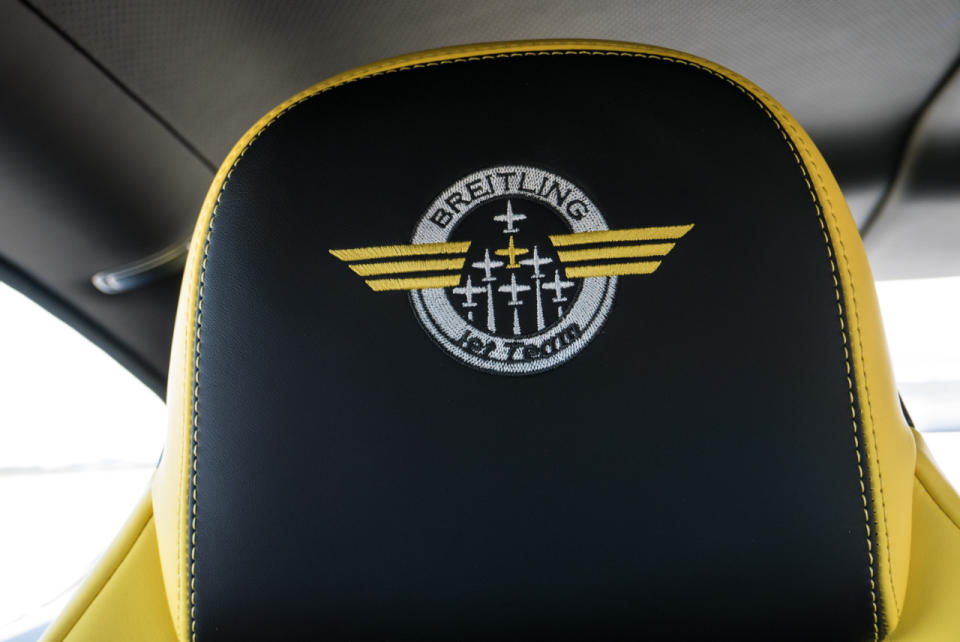
These seven cars are collectors items, and when I tell Douky about the price tag, he looks at me agog: “You could buy a house for that much money.” He says. Along our route we briefly touch 80 mph and I switch on the sports exhaust. Douky’s eyes get wide for a second. “That sounds nice.” He says as he accelerates. I ask him about why he likes to fly and he tells me it’s because of the precision it takes. “You can constantly try to be perfect every time you go up but, there’s always going to be something you can do better.”
All photos by Abigail Bassett

